UC Blogs
What We Need: A Better Bee
Varroa mites, those pesky little parasites that suck the blood out of honey bees and spread multiple viruses, are now found throughout the world,...
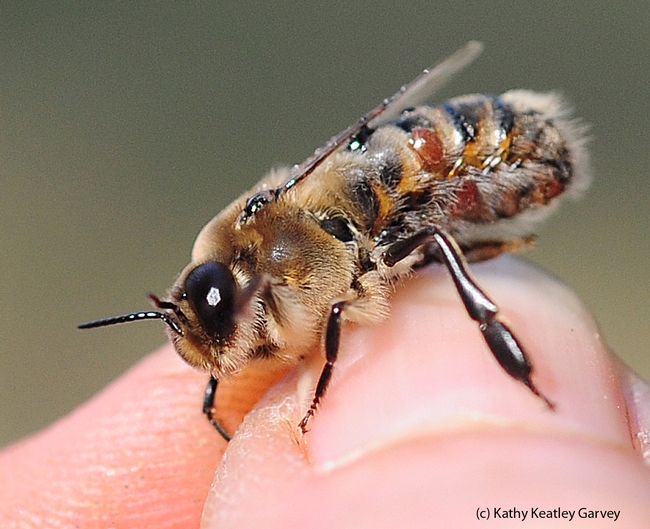
The lifespan of this mite-infested drone will be short. The brownish-orange "bumps" are varroa mites. (Photo by Kathy Keatley Garvey)
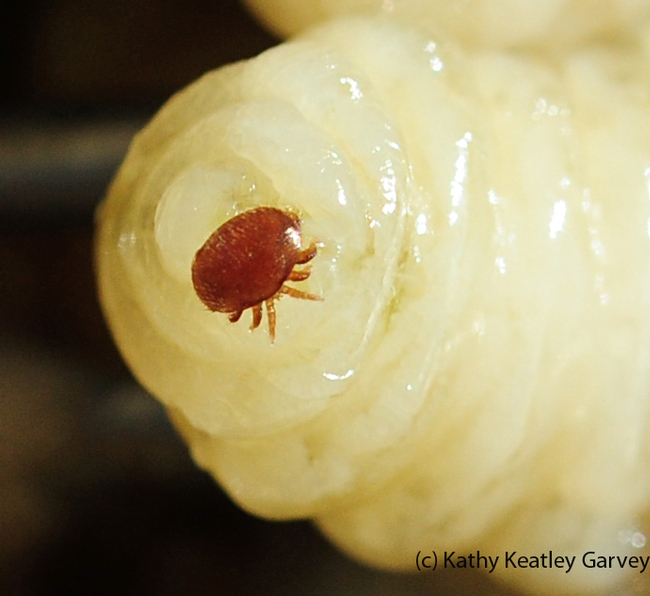
Close-up of varroa mite on drone pupa. (Photo by Kathy Keatley Garvey)
The Secret Life of Flowers
Flowers are like fireworks, except that we rarely get to see the action. Snapdragons, Asiatic Lilies, Daffodils, Roses, Fuchsia and more, unfold, unfurl, uncoil in front of our eyes so slowly that we rarely see this aspect of their beauty. So here, someone has given us the chance. I’ve tried for quite a while to come up with something more to say but sometimes a picture really does speak 1000 words. The Russian (????? ??????) translates to “Living Color”. Follow this to watch a really beautiful display of nature’s fireworks!
Multi-county partnerships saving county and University funds
Scott Oneto, the director of the first UC Cooperative Extension multi-county partnership UCCE Central Sierra, told the Amador County Board of Supervisors that the new organizational structure has saved participating counties and University funds while supporting local programs, reported Jim Reece on TSPNTV.com in Amador County.
Four counties contributed funds to the partnership: Amador County, $134,000; Calaveras County, $148,000; Tuolumne County, $144,000; and El Dorado County, $270,000. The 2011-2012 budget also included $590,000 in grants, $450,000 in federal and state funding and $110,000 in fundraising and indirect county funding, Oneto reported to the Board.
In all, UCCE Central Sierra ended the year with a budget of $3.025 million. The complete 2011-2012 Annual Report is available online (pdf).
The Lavender Blossom Special
If you want to take photos of honey bees in flight, do so early in the morning. They don't move as fast and the lighting is to die for.This morning...
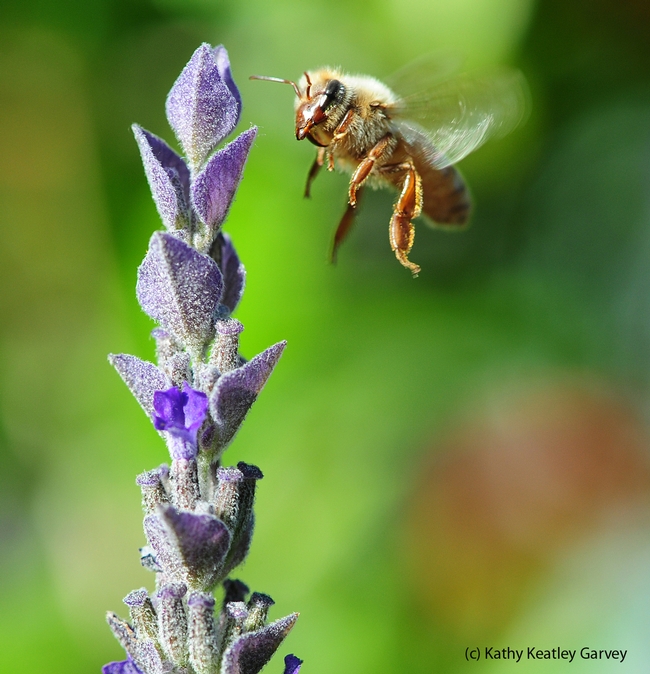
Honey bee in flight, heading toward a lavender blossom. Note the varroa mite on her head.(Photo by Kathy Keatley Garvey)
Valuable Pollinators
I was lucky enough to attend the recent “Pollinator Gardening” workshop hosted by the California Center for Urban Horticulture at UC Davis. Part of CCUH’s Your Sustainable Backyard series, the day devoted to pollinators was fascinating. I learned a lot, which was the point:
- Bees are basically wasps that have changed their diets. Wasps = carnivores. Bees = vegans. Nectar is their flight fuel, and they use plant protein (pollen) to feed their young.
- Boy bees do not sting.
- Not all bees are social, like European honey bees. Many native bees are solitary, nesting in soil or fallen trees. Very few bees make honey.
- There are 20,000 species of bees, on a world scale. This is more diversity than all mammals and birds combined.
- In North America there are 4,000 species of bees.
- In California there are 1,600 species of bees.
- In Yolo County, there are 1,300 species of bees.
- The value of pollination is $220 billion a year in the U.S. European honey bees’ pollination value is $14.6 billion a year. Wild bees? $13 billion a year.
So, I got it! Wild bees are quite helpful pollinators after all. But they are under threat from habitat loss, the intensification of agriculture, new and persistent diseases, and pesticides. It was made plain during the workshop that we, as urban gardeners, should to do our part to provide bee-friendly areas in our yards. How do we do that?
We were told that bees need habitat, not just flowers. They need bare soil, so don’t use too much mulch. They also need sun, plenty of water, rocks and a diverse selection of pollinator plants (native plants work best). You can even make your own bee houses out of reed cane bundles. If you build it, they just may come. (To see a bee-friendly garden, head to UC Davis’ Haagen-Dazs Honey Bee Haven.)
For more information, visit http://www.pollinator.org, www.xerces.org/pollinators-california-region, or www.helpthehoneybees.com.
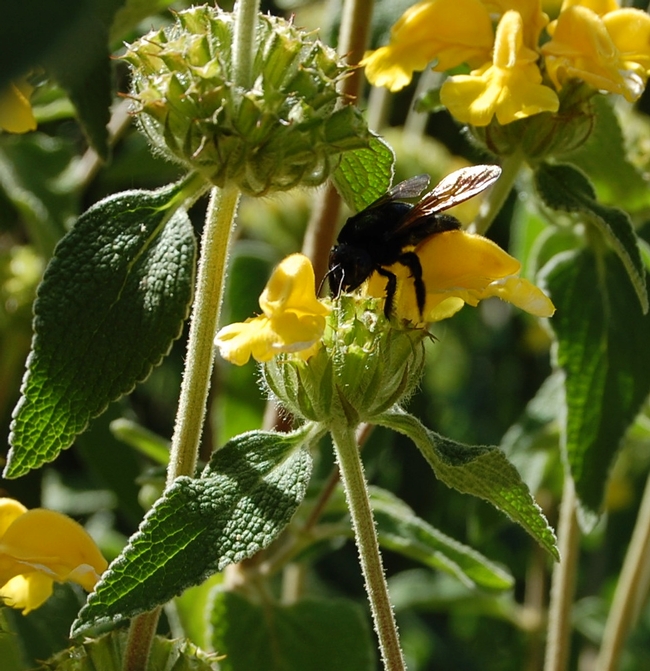
A female Valley carpenter bee (Xylocopata varipuncta) forages for nectar in a Jerusalem sage (Phlomis fruticosa) bloom. (photos by Kathy Thomas Rico)
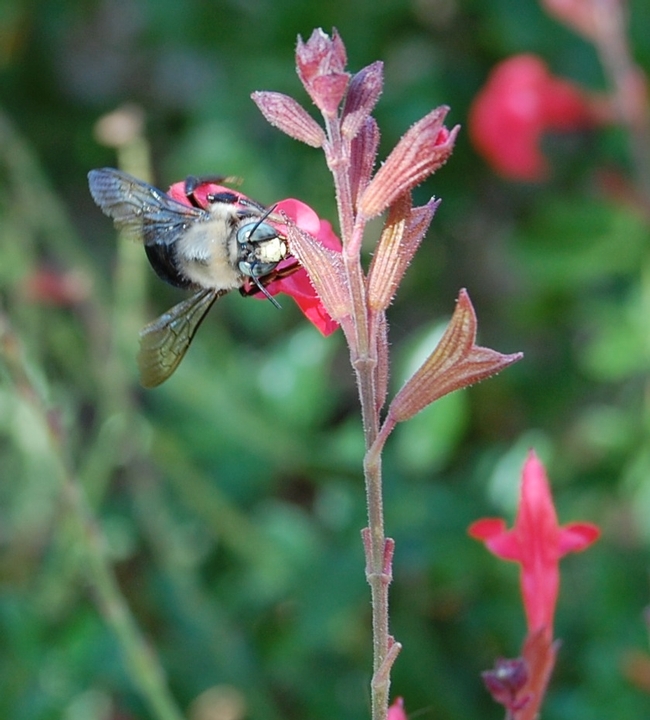
A male carpenter bee (Xylocopata tabaniformis orpifex) visits a Salvia blossom in a Vacaville garden.


